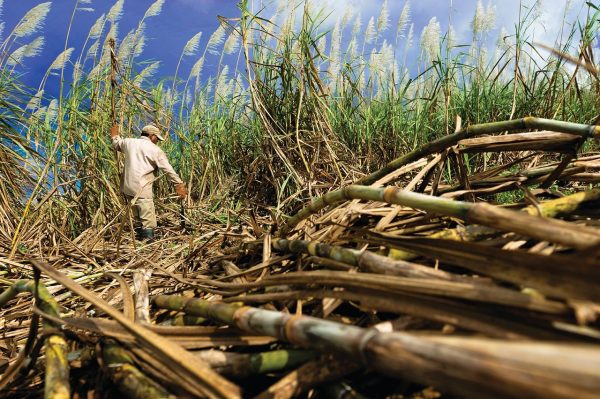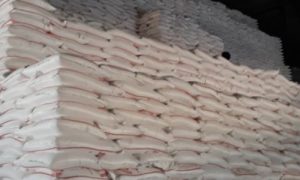Nepal : Farmers say ‘betrayed’ as government cuts sugarcane subsidy by half

Nepal’s government has halved the sugarcane subsidy from Rs70 to Rs35 per quintal, citing fiscal pressure, angering farmers facing rising costs. Despite promises, payments were delayed, eroding trust. Farmers accuse the government of favouring importers and mill owners. Sugarcane output and farmer participation continue to decline amid unstable policies and unpaid dues.
The government has cut the subsidy it provides to sugarcane farmers for the last fiscal year’s harvest by half, citing growing pressure on the treasury.
According to the minutes of the July 7 Cabinet meeting, the per-quintal subsidy has been reduced to Rs35 from Rs70. The decision comes as farmers say their production costs have surged.
In November last year, the government had set the minimum support price for sugarcane at Rs585 per quintal, a Rs20 increase from the previous year.
Officials at the agriculture ministry said they had requested a full subsidy, but the finance ministry and the Prime Minister’s Office declined the request. The Cabinet later agreed to provide only half the subsidy.
The government had introduced the sugarcane subsidy programme in 2018 in response to complaints that mill owners were not paying farmers enough to cover their costs.
“Our production costs are very high. The subsidy helped us recover at least some of it,” said Ashok Prasad Yadav, a farmer from Garuda Municipality-2 in Rautahat. “This cut is a betrayal. First, the government said there would be no subsidy, and then they halved it. It feels deliberate, as it’s both sad and frustrating.”
Yadav said farmers’ groups are currently holding discussions and may announce protests soon.
Kapil Muni Mainali, president of the Federation of Sugarcane Producers Association, said the move shows that the current government favours middlemen instead of supporting farmers.
He pointed out the contradiction in government policies—while subsidies to farmers have been slashed, the government has waived taxes on sugar imports and lowered import duties, supposedly to reduce consumer prices.
“If the government were truly concerned about farmers, consumers, and the national economy, it wouldn’t have made such a regressive decision,” Mainali said.
In the current fiscal year, the government halved the customs duty on sugar from 30 percent to 15 percent to offer relief to manufacturers and consumers.
Despite these efforts, sugar now costs Rs100 to Rs110 per kg in the retail market.
“Sugarcane farming is in decline due to unstable policies and the government’s repeated failures to address farmers’ concerns,” Mainali said.
Due to mill owners’ payment delays and the lack of government support, many sugarcane farmers have already abandoned the crop in favour of alternatives.
Farmers say sugarcane, once a thriving cash crop and a key contributor to local economies, is now beset by problems, which are delayed payments and unmet subsidy promises.
“The government announced the subsidy a year ago, but only now has it decided to cut it,” Yadav said. “Each year, the number of farmers leaving sugarcane farming grows. We are losing faith.”
The government has also struggled to set a fair price for sugarcane that reflects the actual cost of production, leaving many farmers mired in debt. Farmers have long demanded that the government adjust prices in line with rising fuel, labour, and fertiliser costs.
Adding to their woes, sugar mills often fail to pay farmers the prices mandated by the government, further undermining confidence in the system.
Sugarcane is Nepal’s largest commercial cash crop, but farmers have faced chronic issues with delayed or unpaid dues for years. They say the fixed government rate barely covers expenses, even when payments are made.
In 2019-20, Nepal produced 3.4 million tonnes of sugarcane, according to the agriculture ministry statistics. That dropped to 3.18 million tonnes in 2020-21 and dipped lower to 3.15 million in 2021-22.
Until a few years ago, Nepal produced around 155,000 tonnes of sugar annually. According to Salt Trading Corporation, production has now declined to 120,000 tonnes. The company attributes the drop to mill owners’ failure to pay sugarcane growers on time.
Nepal’s annual sugar requirement is around 270,000 tonnes, and imports fill the gap. Only nine sugar mills are currently operational while five others have shut down.
The consistent fall in domestic production has made the country increasingly reliant on sugar imports.
The agriculture ministry estimates that the average Nepali consumes 4 to 6 kilograms of sugar per year. Of the total domestic production, 65 percent is used by households. The remaining 35 percent is used for industrial purposes.
To Read more about Sugar Industry continue reading Agriinsite.com
Source : The Kathmandu Post














